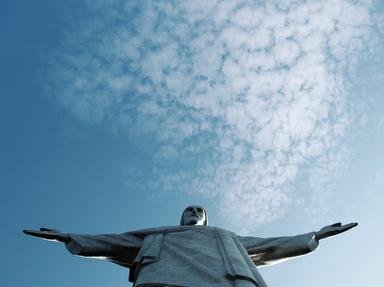Quiz Answer Key and Fun Facts
1. The preeminent short story writer O. Henry is credited with coining the term "Banana republic" in 1896, describing the country he lived in at the time.
In what country was O. Henry living in 1896-1897, and why?
2. The United Fruit Company had its roots in what enterprise?
3. In Guatemala in 1950, the United Fruit Company controlled all of the following, EXCEPT:
4. Because of the extreme degree of control they had over all aspects of life, the United Fruit Company was widely known as:
5. In 1951 Jacobo Arbenz was elected president of Guatemala. Why was this significant?
6. Following the election of Jacobo Arbenz, the US responded by:
7. At the top of Arbenz' 'to do list' was land reform. Much of the fertile land was unused while many peasants were looking for a way to sustain themselves. Approximately what percentage of UFC land was actually cultivated?
8. Under new law the Guatemalan government could expropriate land, compensating the owners through government bonds. However, The United Fruit Company's asking price of $75 an acre (for a total of $15,854,849) must have surprised the authorities somewhat.
How much did the United Fruit Company say their Guatemalan land holdings were worth on their 1952 tax statement?
9. Interestingly, the bill to the Guatemalan government did not come from the United Fruit Company. Who sent the $15 million bill for the expropriated land?
10. Luckily for the United Fruit Company, they had friends in high places.
Which of the following persons was heavily involved with UFC?
11. Prior to the Guatemalan coup d'etat, the CIA succeeded in changing another unwanted regime, though it wasn't about bananas. Where was it and what was it about?
12. Seeing the military buildup in neighbouring countries, Arbenz decided to buy arms from Communist Czechoslovakia. Why there?
13. After a propaganda campaign and stepping up the diplomatic and economic pressure, the rebel army of Castillo Armas invaded Guatemala from El Salvador and Honduras (from UFC land). Which of the following statements is NOT true?
14. After the coup d'etat, Guatemala was a politically stable country for several decades.
15. What became of the United Fruit Company?
Source: Author
triviapaul
This quiz was reviewed by FunTrivia editor
bloomsby before going online.
Any errors found in FunTrivia content are routinely corrected through our feedback system.

